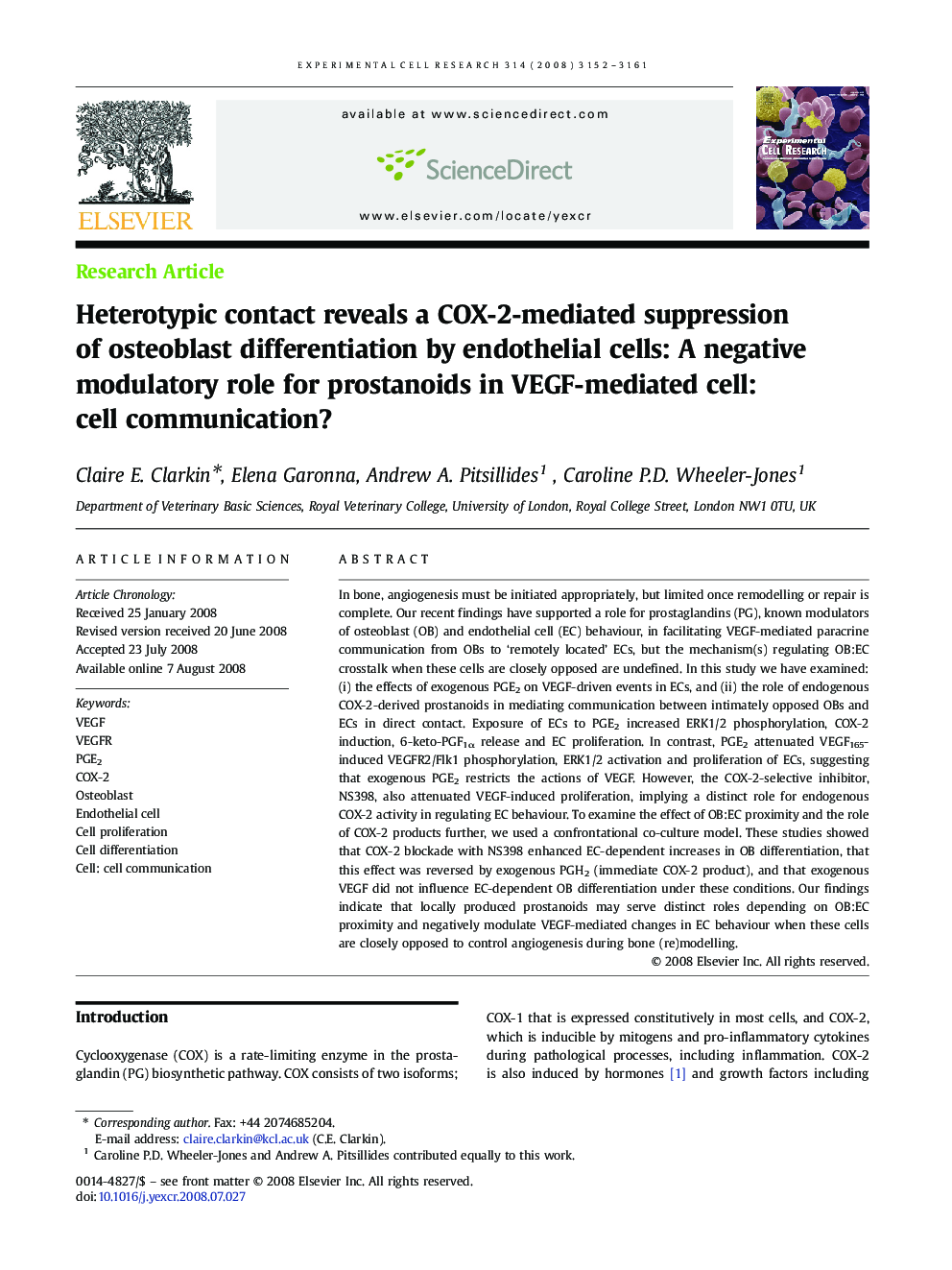| Article ID | Journal | Published Year | Pages | File Type |
|---|---|---|---|---|
| 2132016 | Experimental Cell Research | 2008 | 10 Pages |
In bone, angiogenesis must be initiated appropriately, but limited once remodelling or repair is complete. Our recent findings have supported a role for prostaglandins (PG), known modulators of osteoblast (OB) and endothelial cell (EC) behaviour, in facilitating VEGF-mediated paracrine communication from OBs to ‘remotely located’ ECs, but the mechanism(s) regulating OB:EC crosstalk when these cells are closely opposed are undefined. In this study we have examined: (i) the effects of exogenous PGE2 on VEGF-driven events in ECs, and (ii) the role of endogenous COX-2-derived prostanoids in mediating communication between intimately opposed OBs and ECs in direct contact. Exposure of ECs to PGE2 increased ERK1/2 phosphorylation, COX-2 induction, 6-keto-PGF1α release and EC proliferation. In contrast, PGE2 attenuated VEGF165-induced VEGFR2/Flk1 phosphorylation, ERK1/2 activation and proliferation of ECs, suggesting that exogenous PGE2 restricts the actions of VEGF. However, the COX-2-selective inhibitor, NS398, also attenuated VEGF-induced proliferation, implying a distinct role for endogenous COX-2 activity in regulating EC behaviour. To examine the effect of OB:EC proximity and the role of COX-2 products further, we used a confrontational co-culture model. These studies showed that COX-2 blockade with NS398 enhanced EC-dependent increases in OB differentiation, that this effect was reversed by exogenous PGH2 (immediate COX-2 product), and that exogenous VEGF did not influence EC-dependent OB differentiation under these conditions. Our findings indicate that locally produced prostanoids may serve distinct roles depending on OB:EC proximity and negatively modulate VEGF-mediated changes in EC behaviour when these cells are closely opposed to control angiogenesis during bone (re)modelling.
